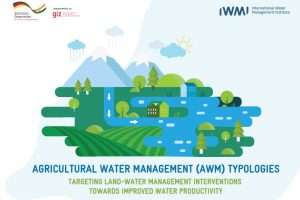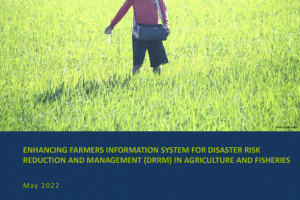Evapotranspiration (ET) is a significant consumer of irrigation water and precipitation on cropland. Global and regional interest in the sustainable management of limited freshwater supplies to meet the rapidly increasing population and food demands has resulted in advanced scientific research on ET measurement, rapid water accounting, and irrigation schedules in the NENA region.
The primary goal of this paper is to compare actual daily evapotranspiration (ET) collected by a remote sensing model and validated by Energy Balance (EB) flux tower field measurements. The flux tower was installed in a wheat field in Sids Agricultural Research Station in Beni Suef Governorate. Through the integration of Moderate Resolution Imaging Spectroradiometer (MODIS) Terra and Sentinel-2 data, a new remote sensing-based ET model is built on two parties: Thermal condition factor (TCF) and vegetation condition fraction (VCF). The remote sensing-based ET estimation model was evaluated using ET field measurements from the Energy Balance flux tower. The land use and land cover maps were created to assist the interpretation of remotely sensed ET data. Field data for five categories were collected to test the accuracy of the land use and cover maps: Water bodies (93 points), urban areas (252 points), trees (104 points), other field crops (227 points), and wheat (249 points), for a total of 925 ground points. The Google Earth Engine (GEE) imported sentinel-2 datasets and filtered the necessary dates and regions. From 1 October 2020 to 30 May 2021, sentinel-2 data were processed and transformed into the Normalized Difference Vegetation Index (NDVI), Normalized Difference Water Index (NDWI), and Normalized Difference Built-up Index (NDBI), which were then combined. The composite layer data were classified using the Random Forest (RF) method on the GEE platform, and the results showed an overall accuracy of 91 percent. The validation factors revealed good indices when RS-based ET results were compared to ground-measured ET. The Root Mean Square Error (RMSE) was 0.84 mm/day. The ‘r’ and ‘d’ values indicated satisfactory results, where ‘r’ yielded a value of 0.785, which indicates that the correlation between predicted and reference results is robust. The analysis of d values revealed a high degree of correlation between predicted (RS-based ET) and reference results (measured ET). The d value was found to be 0.872. Between 21 November 2020 and 30 April 2021, RS-based accumulated ET was 418 mm/season, while ground-measured ET was 376 mm/season. The new RS-based ET model produced acceptable daily and seasonal results.





Add Comment